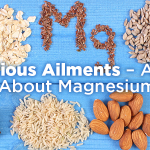Top 7 Best Vegan Protein Sources
“You don’t eat meat? Well, where do you get your protein?”
If you’re a vegetarian or a vegan, you’ve likely heard the shock and horror in people’s voice as they size you up and wonder how you’re still functioning without animal products.
Most people think animal products are the only protein sources available because the dairy and meat industry has led us to believe we need large amounts of animal products in our diet daily. But even meat-eaters get a good amount of their protein from non-meat sources every day. That’s because protein is widely available in many common foods.
We’ve listed 7 great plant-based protein sources that give you just as much protein or more than a single serving of meat. So whether you’re looking to do a plant-based cleanse, add some affordable protein to your diet, indulge in Meatless Monday or change your diet entirely to either vegan or a vegetarian lifestyle, Naturally Savvy has you covered.
- Legumes: Legumes are commonly referred to beans which are known as the “poor man’s protein.” But beans are actually extremely nutrient-rich. Legumes are high in selenium, zinc, phosphorus, calcium, potassium and folate. Virtually all types of legumes contain protein as well as iron and they’re full of soluble fiber, which makes them superstars in the vegetarian world. Some of the most commonly consumed legumes include soybeans, pinto beans, fava beans, lima beans, red beans, turtle beans, navy beans, mung beans, black-eyed peas, garbanzo beans, green peas, kidney beans and all types of lentils.
A commonly consumed legume that is often referred to as a nut is a peanut. Americans spend more than $800 million a year on peanut butter but most don’t know that peanuts are actually legumes. Peanuts can be consumed raw, in butters and are often found in Asian recipes.
Pinto beans, black beans, kidney beans and lima beans can provide your body with more than 20% of the daily vitamin value per serving. Legumes can be consumed on their own but are commonly mixed into processed foods such as tofu, hummus, tempeh, miso, falafel, soups, breads, pastas, crackers, chips and sauces. Most legumes have an anti-inflammatory compound known as saponins. This compound lowers the cholesterol levels, boosts the immune system and protects the body against cancer. Depending on the legume, you can get 15 to 68 grams of protein per serving. In many ways beans outshine meat products because they are low in cholesterol and fat, which is why they are much healthier in comparison.
- Whole gluten-free grains: Grains play many important roles in the diet by providing protein and fiber. Unlike their refined cousins, a whole grain is rich in nutrients. Gluten-free grains are low allergy risk and often times a much cleaner grain to consume. Gluten-free whole grains include amaranth, brown rice, corn, millet, oats, sorghum, teff and quinoa. Quinoa and oats stand out in this group, as they are commonly known for their protein-rich properties.
Quinoa is a good source of fiber, iron, copper, thiamin and vitamin B6 as well as an excellent source of magnesium, phosphorus, manganese and folate. One cup of cooked quinoa delivers 18 grams of protein!
Oats are a good source of fiber, especially beta-glucan, and are high in vitamins, minerals and antioxidants specifically a group of antioxidants called avenanthramides. These antioxidants are believed to have protective effects against heart disease. Due to beneficial health effects, such as lowering blood sugar and cholesterol levels, oats have gained considerable interest as a health food. Oats are a good source of quality protein, ranging from 11-17% by dry weight, which is higher than most other grains.
- Hemp powder, seeds and oil: If you haven’t tried hemp products in your diet, you’re missing out. Hemp seeds are high in nutritional value and contain 20 different varieties of amino acids and all nine of the essential amino acids. Studies in the recent past have shown that consuming hemp seeds whether raw or in oil form, have the capacity to aid in the healing process of diseases related to immune deficiency. Hemp seeds can be tossed on a salad or used in sauces that call for seeds.
Hemp protein powder can be used in a smoothie and can replace any protein powder without losing nutritional benefits. One serving of hemp protein powder can provide 11 grams of protein. There is no other food that contains such high quantities of essential fatty acids. Hemp seeds also contain high amounts of vitamin E and trace minerals. They even have a balanced ratio of omega 3 to 6 fats at around a three to one ratio.
Hemp seeds are rather oily and high in fat. One tablespoon of hemp seed oil contains 3 to 4 grams of fat. The majority of this is polyunsaturated fat — the good kind of fat. Hemp oil can be used to make salad dressings, drizzled raw on vegetables or in place of other seed oils in recipes. Hemp butters, milks and other processed hemp foods also carry nutritional benefits.
- Chia seeds: “Cha-cha-cha Chia!” Yes, those silly plants they sell on late night television are the same seeds that provide protein for health-conscious consumers. The South American chia seed is a great protein source as well as providing you fiber, omega-fats, zinc, vitamin B3, potassium, vitamin B1, vitamin B2, calcium, manganese, magnesium, and phosphorus. Known to be an important food by the Mayan and Aztec civilizations, today Chia has gone mainstream and can be found in everything from yogurts, fruit juices, breads, dressings, sauces, desserts and crackers. Aside from protein, chia also has a high amount of antioxidants that fight the production of free radicals that can damage molecules in cells and contribute to ageing and diseases like cancer. Chia seeds are carb-friendly for those aiming to reduce caloric intake. The true carb content is only 1 gram per ounce.
Chia seeds are also excellent for hydration, because they can hold up to 12 times their weight in liquid. When chia seeds are soaked in water they become gel-like and expand in your stomach. Chia seeds are usually grown organically, are non-GMO and naturally free of gluten. Each tablespoon of chia seeds is equal to about one gram of protein.
- Pea protein: Peas are part of the legume family but recently are being used in processed foods and supplements as a stand-alone protein source. Pea protein is an excellent alternative to whey or protein mixes. Pea protein is a highly bioavailable protein. Peas are allergen-friendly, non-GMO and have a naturally balanced amino acid profile that includes high concentrations of branched-chain amino acids and glutamine. Strength-training athletes and body builders are turning to pea protein as a quality vegetarian alternative because it is an ideal choice for building lean muscle development. Pea protein is typically easy to digest and doesn’t carry the negative reputation that other protein powders do such as cramping, discomfort and bloating. Peas are also being used as an alternative to eggs in products like mayonnaise as they are easy to produce and are friendly to the environment in comparison. One serving of pea protein contains about 24 grams of protein.
- Nuts: Whether you eat them whole, in an energy bar, trail mix or as a nut butter spread, you can get a good protein boost from nuts. For example in a one-ounce serving of almonds you’ll get 6 grams of protein. In the same serving size walnuts will give you 4.6 grams of protein and pistachios 5.9 grams of protein. Nuts are often mixed into smoothies, sauces and processed foods such as butters, cookies, crackers, breads, cheeses, milks, and candy. Although peanuts carry the title in their name they’re actually a legume. Peanuts grow underground, as opposed to tree nuts such as: almonds, beach nuts, brazil nuts, butternuts, cashews, chestnuts, chinquapins, coconuts, hazelnuts, ginko nuts, hickory nuts, lychee nuts, macadamia nuts, pecans, pine nuts, pistachios, sheanuts, and walnuts. In addition to protein nuts provide other significant vitamins and minerals:thiamine, vitamin B6, iron, manganese, magnesium, phosphorus, potassium, zinc, riboflavin, vitamin E, and calcium.
- Fruits and Vegetables: We left this one for last because this is where most people don’t realize how much protein is hiding in the everyday fruits and vegetables we are all consuming. Some top protein sources in the fruit section of the produce department include: blackberries, apricots, nectarines, raspberries, oranges, jackfruit, cherries, bananas, and apples. All of these delicious selections have 1.5 to 2 grams of protein per serving.
 Some standouts in the vegetable world include, Kale, which has between 4 to 6 grams of protein per serving. Sprouts contain between 1 to 2 grams of protein per serving as do beets, broccoli and squash. Brussels sprouts, spinach, sweet corn, mustard, parsley, collard greens, arugula, asparagus and okra contain more than 3 grams of protein. Avocados contain more than 4 grams of protein per serving.
Some standouts in the vegetable world include, Kale, which has between 4 to 6 grams of protein per serving. Sprouts contain between 1 to 2 grams of protein per serving as do beets, broccoli and squash. Brussels sprouts, spinach, sweet corn, mustard, parsley, collard greens, arugula, asparagus and okra contain more than 3 grams of protein. Avocados contain more than 4 grams of protein per serving.
As you can see fruits and vegetables consumed alone pack quite the protein punch but often times are combined in salads and fruit and vegetable platters making fruits and veggies another solid meat replacement. In addition to protein fruits and vegetables contain multiple nutrients and can really add nutritional value to a meal. And now you might know why most health advocates say, “eat the rainbow.”
So why is protein intake so important? Proteins are the main building blocks of the body used to make muscles, tendons, organs and skin. Proteins are essential for our health and for those looking to maintain a healthy body weight. So if you’re looking for plant-based proteins, this list should leave you with multiple options as well as satisfy your nutritional requirements.
Now that you’re inspired to get your protein fix from plants instead of meat, we have some awesome plant based recipes here on I Am Zuri.
[…] will save you money. Replace the meat part of your meal a few days per week with vegan proteins. Get my top best vegan protein sources here. Heard of meatless Mondays? Here’s a fun fact for those of you interested in shrinking down that […]
Leave a Comment





Great infographic! Love it.
It’s perfect time to make a few plans for the future and it’s time to be happy.
I have read this put up and if I may just I wish to suggest you few interesting things or suggestions.
Maybe you could write next articles referring to this article.
I wish to learn even more issues about it!
We’re just getting started here at I Am Zuri. Thanks for the feedback!